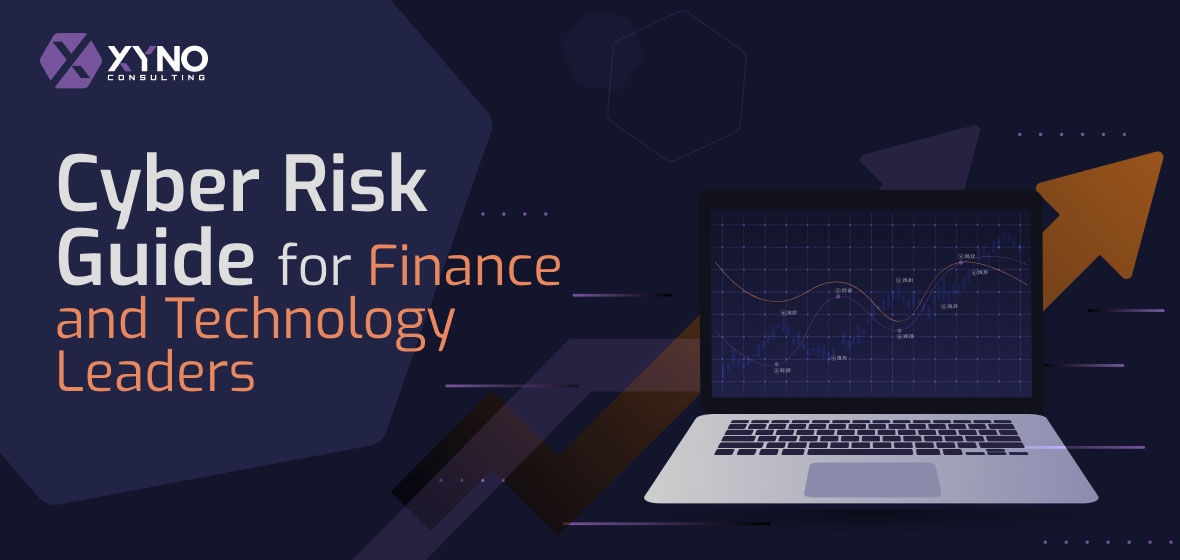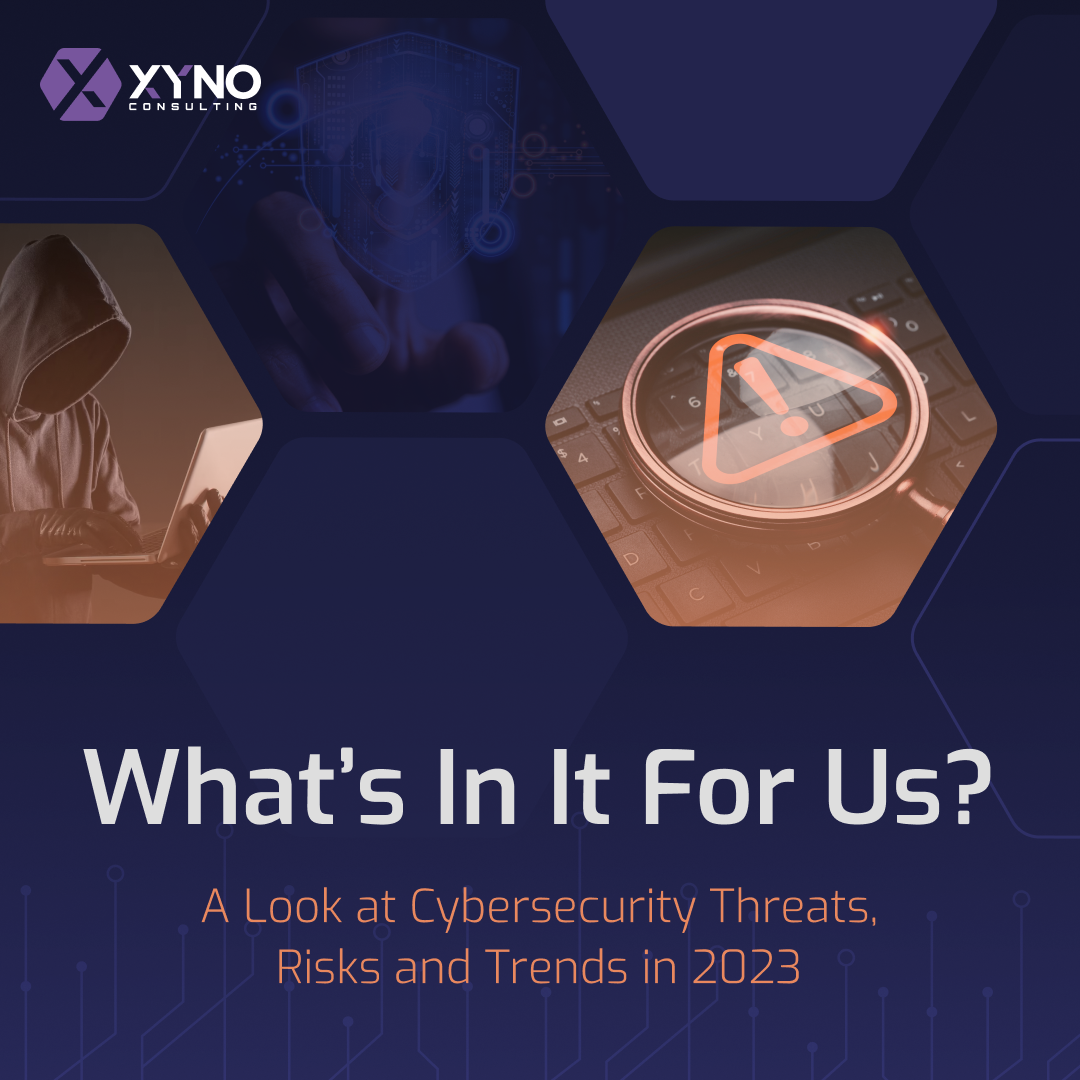The probability of exposure or loss resulting from a cyber attack or data breach on your organization is considered a cybersecurity risk. Cyber attacks can have significant and far-reaching impacts on economies and organizations globally.
In today’s article, you’ll learn of the different impacts cyber attacks have on individuals, organizations, and even governments. Some examples of cyber attacks on governments and whole countries will be presented. You will also learn about how can your organization protect itself against cyber attacks. Finally, learn about Xyno and Maxxsure’s cyber risk management recommendations that can help your organization prepare for cyber attacks.
Impact of Cyber Attacks on Economies and Organizations Globally
The impacts of cyber attacks can vary in scope and severity. Here are some of the most common ones:
Financial Losses
Cyber attacks can result in direct financial losses due to theft of funds, fraud, and extortion. Additionally, organizations may incur significant costs in restoring their systems, investigating the breach, and implementing security measures to prevent future attacks.
Reputational Damage
Cyber attacks can harm an organization’s reputation. News of a data breach or a successful attack can erode trust and confidence in the affected organization, leading to a loss of customers, partners, and investors.
Legal and Regulatory Consequences
Organizations may face legal consequences, including fines and legal liabilities, for failing to adequately protect sensitive information. Privacy and data protection regulations, such as the General Data Protection Regulation (GDPR) in Europe, impose strict requirements on organizations in case of data breaches.
Operational Disruption
Cyber attacks can disrupt an organization’s operations, leading to downtime and productivity losses. This can be particularly damaging for critical infrastructure, healthcare systems, and financial institutions, where lives and economic stability are at stake.
Intellectual Property Theft
Industrial espionage and cyberattacks can lead to the theft of valuable intellectual property, trade secrets, and proprietary information, which can have long-term economic impacts on innovation and competitiveness.
Supply Chain Disruption
Cyber attacks on organizations can also disrupt their supply chains, affecting production and distribution. This ripple effect can impact not only the target organization but also other companies dependent on their goods or services.
National Security Implications
In cases where cyber attacks are state-sponsored or have national security implications, the impact can extend to a country’s overall security and geopolitical relationships.
Increased Costs of Cybersecurity
Organizations often increase their investments in cybersecurity measures after a cyber attack. While necessary, these increased costs can strain budgets and divert resources from other essential areas.
Insurance Costs
The rising frequency and severity of cyber attacks have led to increased insurance costs for businesses seeking cyber insurance, further impacting their bottom line.
Loss of Competitive Advantage
Sustained cyber attacks can lead to a loss of competitive advantage, as competitors may gain access to an organization’s confidential information or disrupt its operations.
Psychological Impact
Cyber attacks can create fear and uncertainty, affecting the psychological well-being of individuals and organizations. The constant threat of cyber attacks can also lead to a state of hyper-vigilance and stress.
Escalation of Cyber Warfare
Cyber attacks can escalate conflicts between nations in the realm of cyber warfare, potentially leading to increased tensions and the risk of physical conflict.
In summary, the impact of cyber attacks on economies and organizations globally is multifaceted and can encompass financial, operational, legal, and reputational consequences. It underscores the importance of robust cybersecurity measures and proactive risk management to mitigate the potential fallout from cyber threats.
Cyber Attacks in the US
Cyber attacks have targeted organizations in the US at an unprecedented rate. An estimated $4 billion was lost to cybercrimes in 2020 alone, according to a report by the Federal Bureau of Investigation (FBI). In fact, cyber crime is projected to hit $10.5 trillion by 2025 according to a report by Cybersecurity Ventures.
Cyber attacks come in many forms. Global ransomware attacks alone reached $120 billion in 2021, 57 times the amount in 2015. In recent years, there were also attacks on critical infrastructure such as the NotPetya cyber attack in 2017 that crippled the global shipping industry and the Colonial Pipeline system hacking in 2021 that led to its shutdown.
Government infrastructure is not the only target. The Center for Strategic & International Studies (CSIS) has noted that from July to September 2023, Chinese hackers have increased attacks against the US defense industrial base and critical infrastructure in South China Sea amid rising tensions between China and the US. In the same period, they have also targeted a U.S. military procurement system for reconnaissance, and breached the emails of several prominent U.S. government employees in the State Department and Department of Commerce.
While cyber criminals almost always target corporations and government agencies, US households are also vulnerable to attacks. In the US, 70% of homes have at least a single smart device. Between January and June of 2021, there were over 1.5 billion breaches in American households.
How to Protect an Organization from a Cyber Attack
Protecting an organization from cyber attacks is crucial in today’s digital world. Implementing a comprehensive cybersecurity strategy can help safeguard your organization’s data, systems, and reputation. Here are some key steps to protect your organization from cyber attacks:
Employee Training and Awareness
Educate all employees about cybersecurity best practices, including recognizing phishing emails, not sharing passwords, and reporting suspicious activity.
Strong Password Policies
Enforce strong password policies and implement multi-factor authentication (MFA) wherever possible.
Regular Software Updates and Patch Management
Keep all software, operating systems, and applications up to date with the latest security patches.
Firewalls and Intrusion Detection/Prevention Systems
Deploy firewalls and intrusion detection/prevention systems to monitor and filter incoming and outgoing network traffic.
Access Control
Limit access to sensitive data and systems on a need-to-know basis. Regularly review and revoke unnecessary privileges.
Data Encryption
Encrypt sensitive data both at rest and in transit to protect it from unauthorized access.
Secure Network Architecture
Segregate networks to reduce the attack surface. Use network segmentation and micro- segmentation to isolate critical systems and data.
Regular Data Backups
Perform regular backups of critical data and systems. Ensure backups are secure, offline, and regularly tested for recovery.
Incident Response Plan
Develop and maintain an incident response plan that outlines the steps to take when a cyber attack occurs. Test this plan regularly.
Endpoint Security
Use endpoint security solutions, including antivirus and anti-malware software, on all devices connected to your network.
Email Security
Implement email filtering and security measures to block phishing emails and malicious attachments.
Web Security
Use web application firewalls and secure coding practices to protect against web-based attacks.
Mobile Device Management (MDM)
If your organization uses mobile devices, implement MDM solutions to secure and manage them effectively.
Vendor Risk Management
Assess and manage the cybersecurity posture of third-party vendors and partners.
Security Audits and Penetration Testing
Regularly perform security audits and penetration testing to identify vulnerabilities and weaknesses.
Continuous Monitoring
Implement continuous monitoring systems to detect and respond to threats in real-time.
Security Policies and Procedures
Develop and enforce security policies and procedures that address cybersecurity at all levels of your organization.
Collaboration with Law Enforcement and Industry Groups
Collaborate with law enforcement agencies and industry-specific cybersecurity groups to stay informed about emerging threats.
Cybersecurity Insurance
Consider cybersecurity insurance to mitigate the financial impact of a cyber attack.
Regular Training and Drills
Conduct regular cybersecurity training and simulation exercises to ensure that your team knows how to respond to cyber threats effectively.
Remember that cybersecurity is an ongoing process, and the threat landscape is continually evolving. Regularly assess and update your security measures to adapt to new threats and vulnerabilities. Additionally, seeking the expertise of cybersecurity professionals and consultants can help you tailor your cybersecurity strategy to your organization’s specific needs.
References:
https://home.treasury.gov/news/press-releases/jy0364
https://www.csis.org/programs/strategic-technologies-program/significant-cyber-incidents
https://www.wired.com/story/notpetya-cyberattack-ukraine-russia-code-crashed-the-world/




